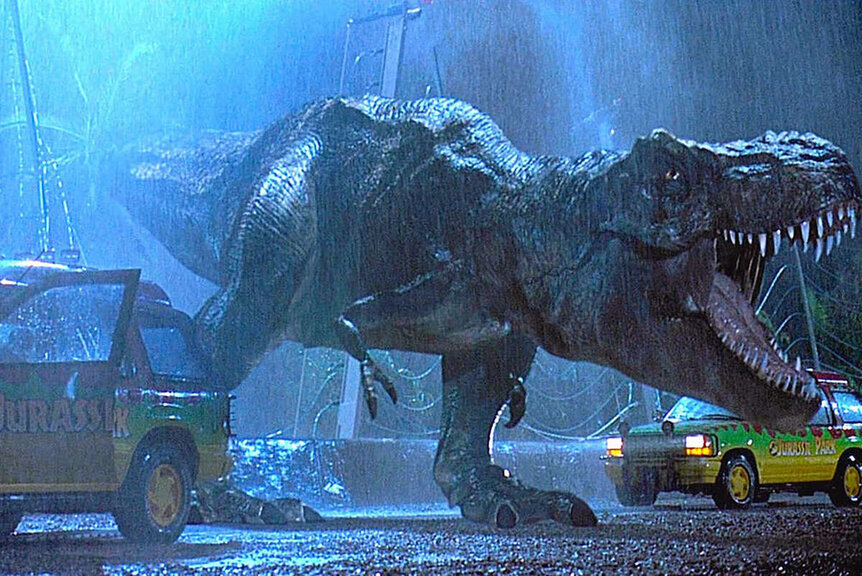Create a free profile to get unlimited access to exclusive videos, sweepstakes, and more!
Dinosaur Census! Scientists Estimate 1.7 Billion T. Rexes Ever Lived
But Rexy is still our favorite.

When John Hammond first brought his dream of a theme park filled with living dinosaurs to fruition in the first Jurassic Park, he did so with a clear plan for controlling the population. The idea was that all dinosaurs would be born in controlled settings, inside the lab, and wild reproduction would be prevented by making all individuals female. We all know how well that turned out, but it wasn’t a bad idea. If you’ve got a theme park filled with ravenous monsters resurrected from the past, you want to know how many of them there are.
If keeping an accurate headcount of the dinosaurs inside your park is so difficult, imagine the challenge paleontologists are up against when calculating the population of real dinosaurs in Earth’s distant past. That’s precisely the challenge taken up by Eva Griebeler at Johannes Gutenberg-University in a new paper published in the journal Palaeontology. According to the study, the Earth has been home to 1.7 Billion T. rexes.
RELATED: Tyrannosaurs Ripped Each Other’s Faces Off So They Could Get What They Wanted
Lacking the ability to clone dinosaurs and see what they’re like, real-world paleontologists are reliant on what they can find in the fossil record. Paleontologists can make some first order approximations of population based on the number of fossils they dig up, but that’s only ever a rough guess. It might seem that if you find 10 fossils of one species and 100 of another, that the other had a population roughly 10 times the size, but that’s not necessarily the case.
In order for animals to fossilize, there’s a whole lot that has to go right. They need to die in a place where they won’t be disturbed, not just by large predators but also by smaller scavengers, even insects. They also need to be covered over by sediment pretty quickly, to avoid as much decomposition as possible. Then they have to wait and be lucky. If the land shifts and they are uncovered or if they’re buried in the wrong kind of sediment, all bets are off. There are half a hundred reasons an animal may not fossilize well that have nothing to do with their numbers.
In order to figure out how many T. rexes have ever lived, Griebeler had to consider a number of variables including egg laying rates, survival rates, age at sexual maturity, and survival rates. From there, you can back into an estimate for how many could have lived by figuring out how many generations you can fit between first appearance and asteroid impact. This isn’t the first T. rex population estimate, but it might be the most accurate.
A previous estimate placed the total number of T. rexes at 2.5 Billion, but the new model had the benefit of newer and better data. It considered a lower overall survival rate, a reduced number of eggs laid, and fewer overall generations. Those numbers exist in the literature, based on the fossil record and the study of living related bird species. Griebeler then validated her model against a variety of living species including birds, reptiles, and mammals. The model accurately predicted populations of 23 living species, which suggests it’s a good system for dinosaurs, too, provided we have accurate data on the relevant variables.
As researchers continue to unearth new fossils and reconsider the fossils already in our collections, it’s likely that we’ll get increasingly accurate population numbers for more and more species. And those numbers will probably change every once in a while, as we learn new things. Whatever the final count, I think we can all agree that 1.7 Billion is far too many T. rexes for anyone to handle.
Catch the entire Jurassic saga, available from Universal Pictures.



























